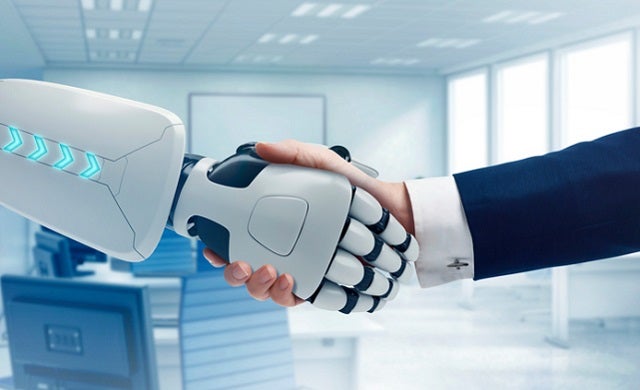
TWAS
When people envision robots in manufacturing units and other industry, they see machine replacing man. But a rising sector, that of Collaborative robots, has turned this vision around. The latest in robotics, cobots work in tandem with human employees due to their sensors and vision tech. Unlike traditional industrial robots that by necessity were locked in cages to ensure the safety of humans, Cobots don’t require this precaution. To understand how big the cobot market is going to become, we need only look at the Collaborative robot arms. Robotic arms are the appendages that actually do the work. Without them, every industrial robot is useless. It is predicted that by 2026, the cobot arms industry will cross USD 14 Billion in value. When just a part of collaborative robots is set to surpass 14 billion mark, think how much the entire segment will be worth.
What Is Responsible For The Growth Of Collaborative Robots Industry?
Old generation industrial robots were dangerous to workers because their rapid movement and heavy payloads could lead to injury. Cobots, on the other hand, stop all movement when they detect a worker or an obstacle on their path. Their sensors guarantee that human employees are safe at all times, even when working next to them.
Safety and protection are the number one reason collaborative robots’ industry is steadily rising in today’s world. But it is the application of cobots that is supplementing the expansion.
- Limit to force
Cobots are designed to collaborate with other workers which is why when they sense something abnormal on their path, either of the two things happens:
- The cobotceases all motion.
- The cobotreverses its direction.
The limit to their power and force ensures that no impact occurs. Keeping not only workers protected but the product in development too.
- Hand guiding ability
A collaborative robot has an arm. At the end of the arm is an end effector. The end effector is an additional device that the cobot wields to perform an action. A human operator can teach the cobot how to utilise the end effector. The cobot can learn how fast it needs to move the end effector to make sure nothing is harmed or damaged. It can also learn the correct way of holding the item, product or object.
- A safety zone
Completely stopping every time a human comes close to the cobot and then restarting when they move away can greatly hinder its productivity. Therefore, cobots come with a safety zone. When a worker enters the safety zone, the cobot only slows down its movement. The cobottracks the location of the human and increases the speed when they step out of the safety zone. The ability to monitor speed and separation is another reason the cobot industry is accelerating.
- Collaboration
The wonder of cobots is that they can either work independent of human operators or work with them. When the worker needs to intervene, the cobot can stop every motion and let the employee complete the task. The cobot restarts work when the employee leaves.
- Easy setup
For an industry, installing a machine and then programming it takes considerable time and effort. Both of which impact how fast and well they are integrated into the sector. Collaborative robots are installed in a matter of hours, while conventional robots take weeks. It is why the field of cobots is rising in leaps and bounds.
Furthermore, programming cobots doesn’t take expertise. Typically, you just need to plug them, and they are ready for operations. If programming is required, it can be conducted via a tablet or simply moving the collaborative robot arms.
To Conclude:
Dull work.Dirty work.Dangerous work. Collaborative robots do all three. Thus, freeing up humans to concentrate on more complex tasks and jobs that bring more satisfaction. Right now, cobots are making waves in the manufacturing field, but their consistent rise forecasts a rosier picture. The time when every industry from hospitality to agriculture will apply cobots is not far.
Safe, easy to deploy, collaborative, precise and not a burden to the pocket are just a few benefits of them. The many other advantages, some of them entirely unique, these next-generation robots bring to the table assure their proliferation.


